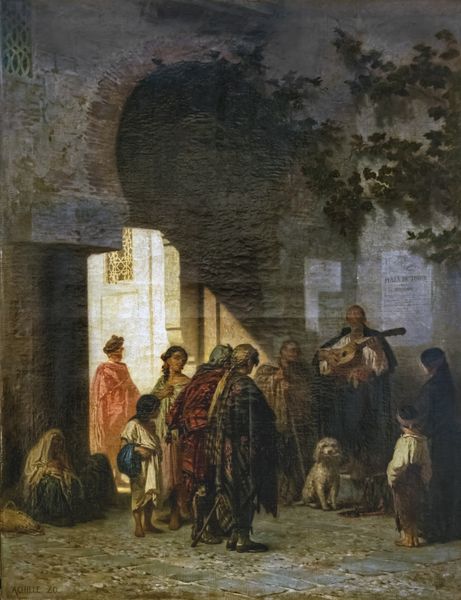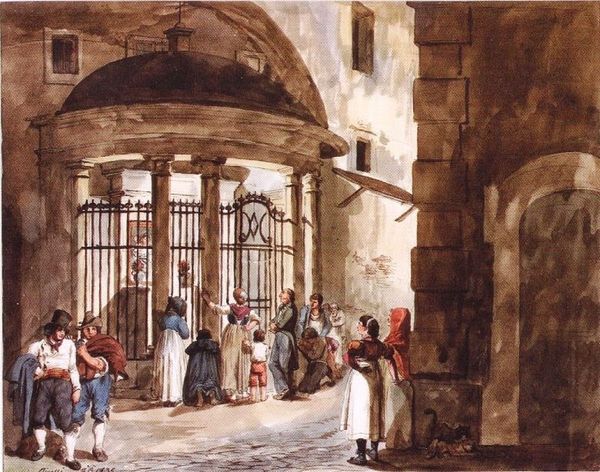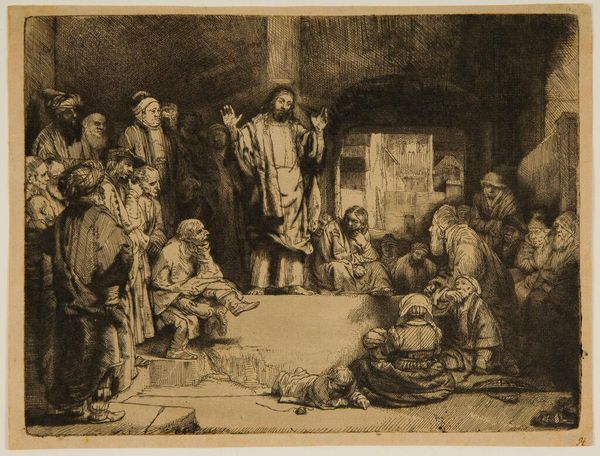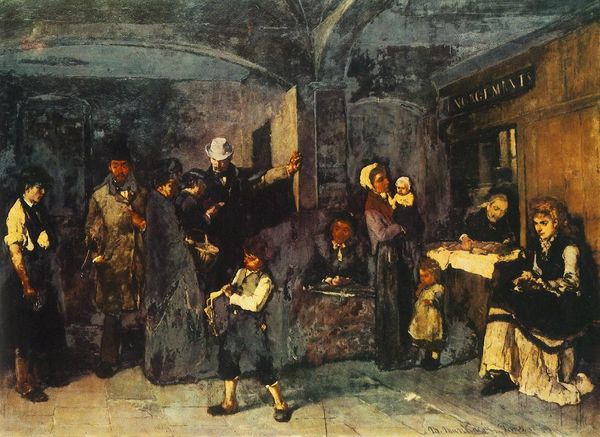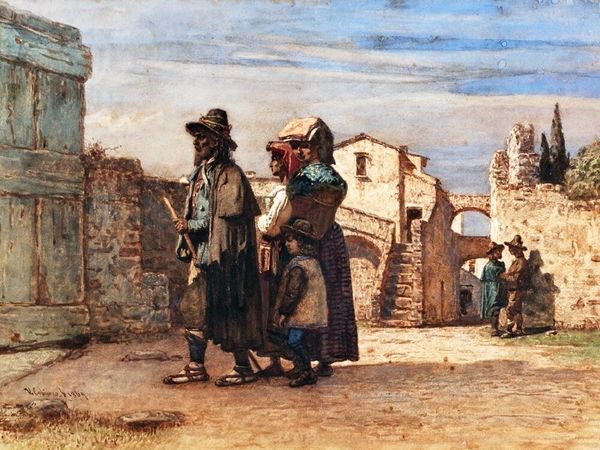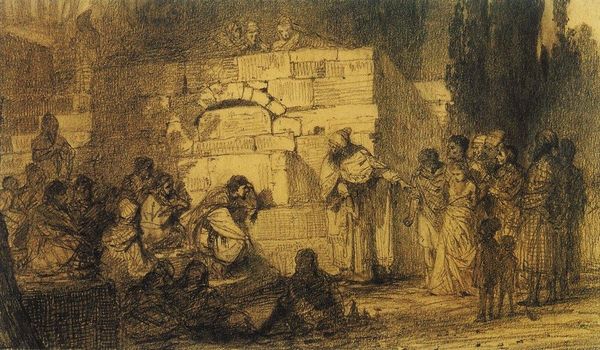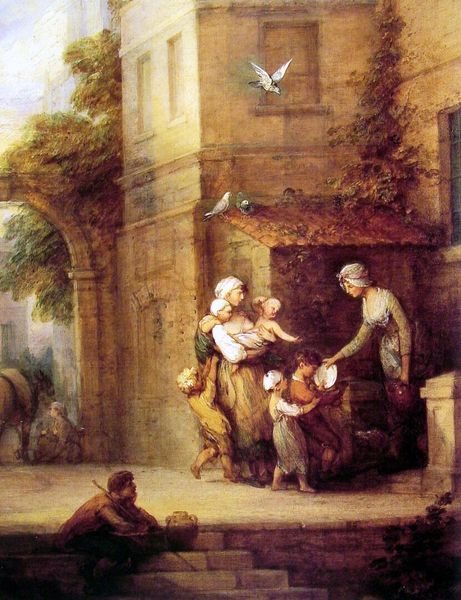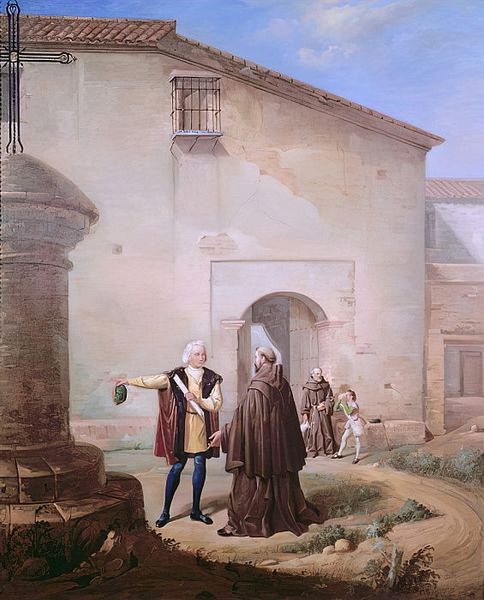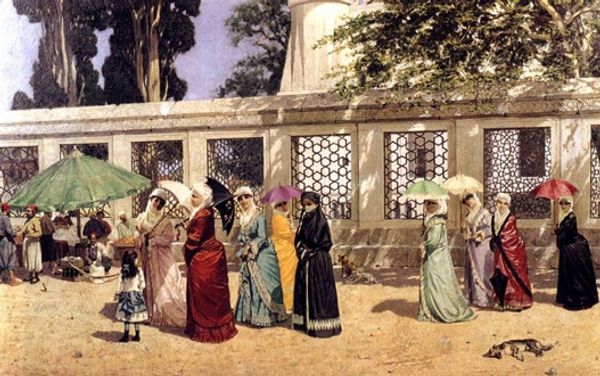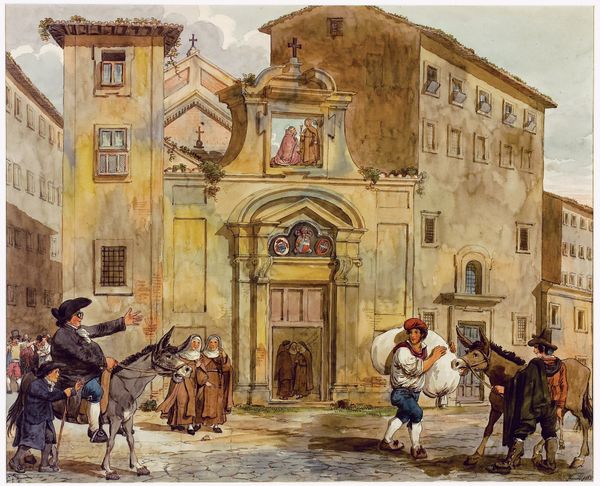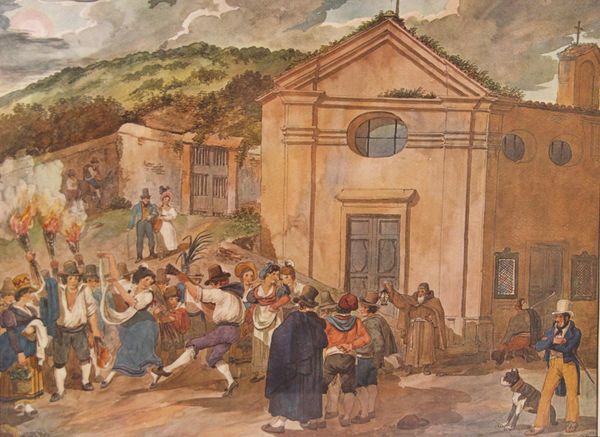
painting, watercolor
#
painting
#
landscape
#
oil painting
#
watercolor
#
city scape
#
cityscape
#
genre-painting
#
italian-renaissance
Copyright: Public domain
Curator: Let’s have a closer look at this piece, titled "Monk gives food to the poor," or "Food for the Poor", created by Achille Pinelli. It's rendered in watercolor and portrays a scene of apparent destitution against an Italian Renaissance cityscape backdrop. Editor: The first impression I get is…muted light and kindness battling hardship. See the delicate wash of colors; they seem to soften the stark reality of poverty depicted. There’s something hopeful in how the scene is framed by that old building. Curator: Indeed. Pinelli’s choice of watercolor is crucial. It offers a luminosity and immediacy well suited to documenting urban life. The landscape technique emphasizes architecture, placing social interactions within specific environments. This aligns with a broader artistic interest in civic life. We're given clear markers that suggest material processes shaped by architectural boundaries. Editor: Yes, the architectural setting amplifies the quiet generosity of the act. The contrast of textures—rough stone, humble clothing—they give a tactile feel to the empathy depicted. There is a contrast between architecture with S.Crispini Maritiri title, that represent institution with open gates and poor people who seems to stand still there. Did you see the face expression? I feel a blend of hope and vulnerability looking to get something to eat Curator: Notice the lines—economic, social—that manifest through access to resources. The production of the work itself speaks to class differences, in terms of who could commission and who features in art. It also alludes the relationship between consumption, and representation and how materials contribute narrative meaning. Editor: It’s incredible how much of the human experience is caught in the interplay of pigments on paper, the material becoming almost secondary to the sheer emotive impact. To me this speaks beyond historical recording, to an ever present call for charity. Curator: Right. The artwork pushes the conversation about artmaking past mere aesthetic appreciation toward socioeconomic issues. Its enduring value might lie in its capacity to make us question these very things. Editor: And perhaps find beauty in unexpected places, too. Art as testament to, and agent of, change… Always inspiring.
Comments
No comments
Be the first to comment and join the conversation on the ultimate creative platform.

